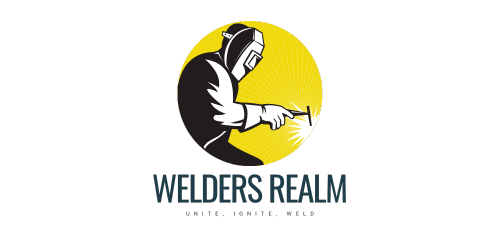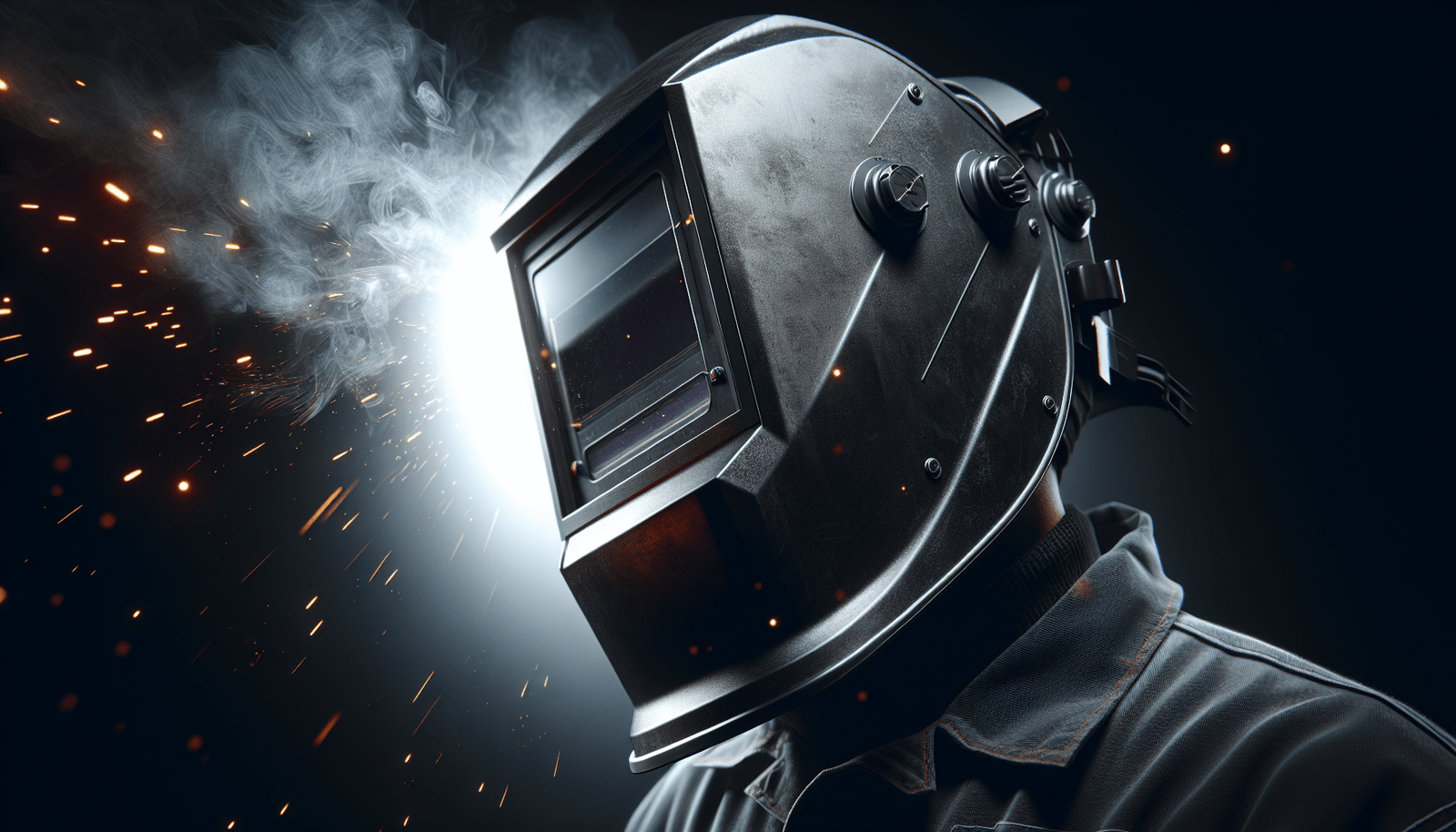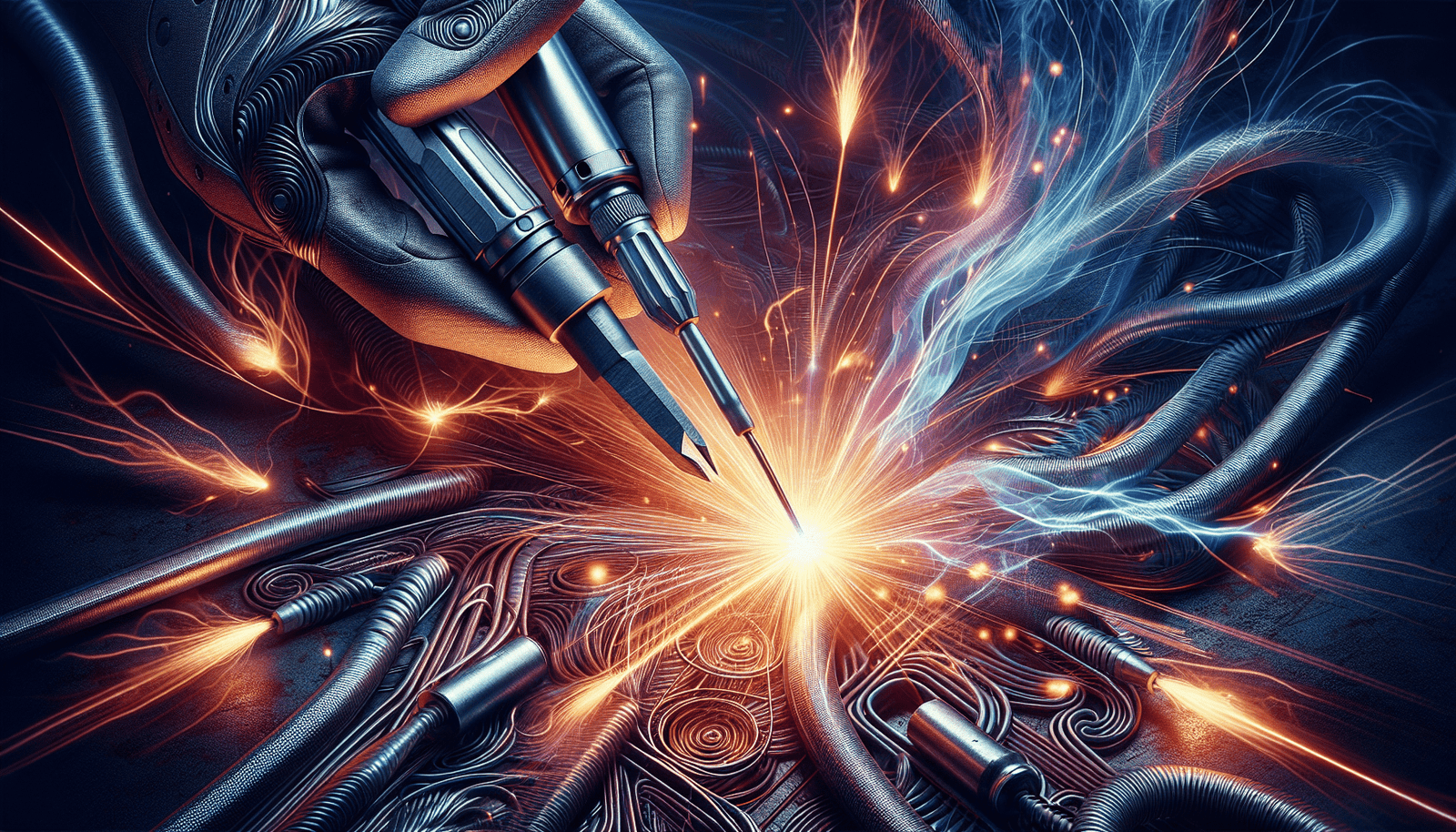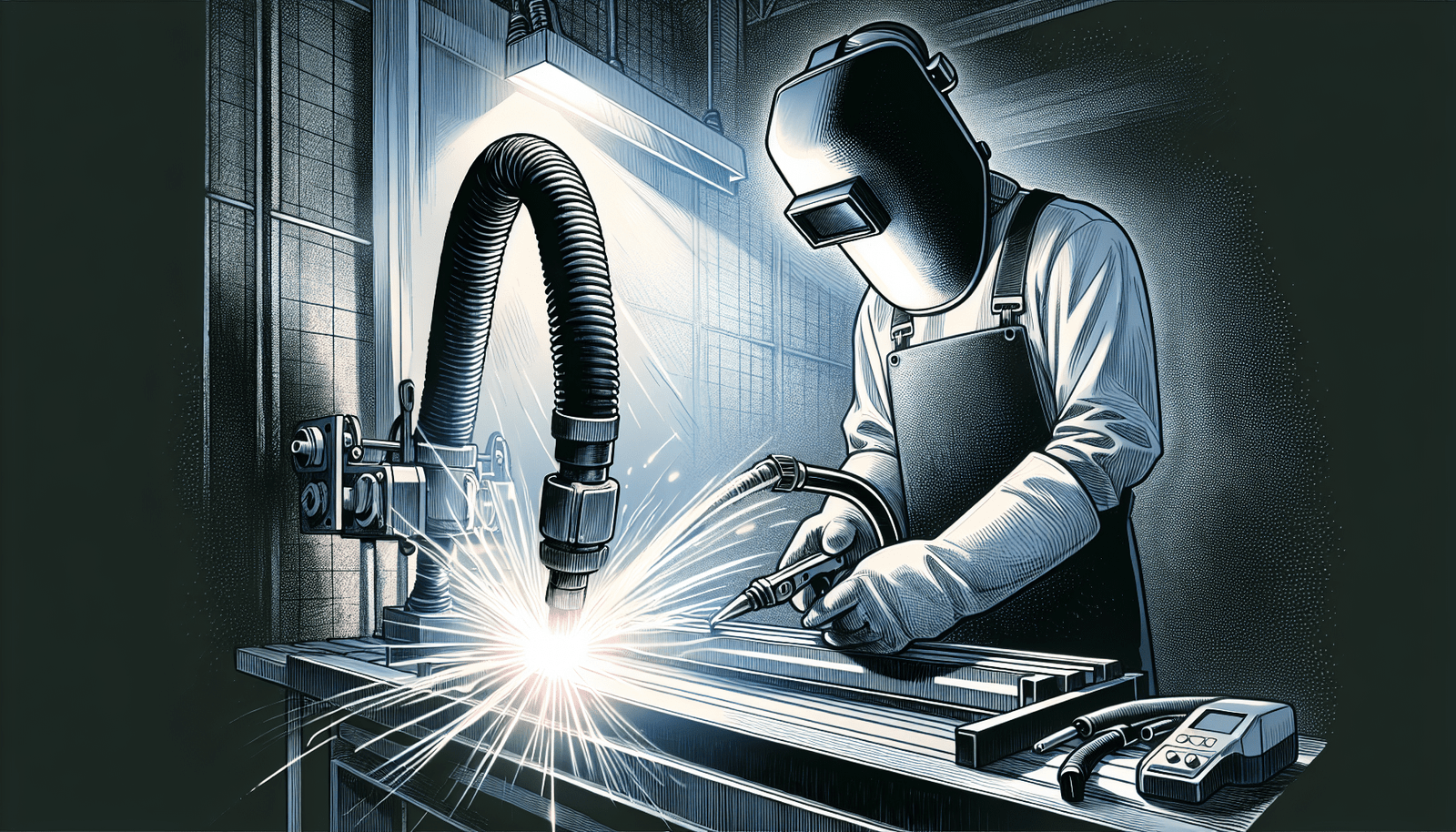In this article, we will explore the importance of staying comfortable and safe while using welding safety gear. Whether you are a professional welder or a hobbyist, it is crucial to understand the significance of proper safety equipment in your welding routine. We will discuss how the right gear not only protects you from potential hazards but also ensures a comfortable working experience. By following the guidelines and recommendations, you can enhance your welding practice and maintain your well-being throughout the process. So, let’s dive in and discover how to make the most of your welding safety gear!
Understanding the Importance of Welding Safety Gear
Welding is a high-risk occupation that involves working with intense heat, sparks, and hazardous materials. It is essential for welders to prioritize safety by using the proper welding safety gear. This article will guide you through the different types of safety gear available, explain their importance, and provide tips on selecting the right gear for maximum comfort and safety.
How To Stay Comfortable And Safe With Welding Safety Gear
Why safety gear is necessary for Welders
Safety gear is crucial for welders as it provides protection against various hazards present in their work environment. Welding involves the use of intense heat generated by electric arcs or gas flames, which can cause burns, fires, and even explosions if not handled properly. Additionally, the process produces harmful fumes, smoke, and particulates that can damage the respiratory system if inhaled. Using the right safety gear helps minimize these risks and ensures the well-being of the welder.
Risks of not using proper welding safety equipment
Failing to use proper welding safety equipment can have severe consequences for both short-term and long-term health. Without the appropriate gear, welders expose themselves to the risk of burns, eye injuries, respiratory problems, and skin irritation. The intense light emitted during welding can cause arc eye, a painful condition similar to sunburn in the eyes, which can lead to temporary or permanent vision loss. Inhaling toxic fumes released during the welding process can have long-term effects on the respiratory system, including lung damage and respiratory diseases.
Occupational Safety and Health Administration (OSHA) rules for welding safety gear
The Occupational Safety and Health Administration (OSHA) has established regulations and guidelines to ensure the safety of workers, including welders. OSHA requires employers to provide adequate personal protective equipment (PPE) to employees, which includes welding safety gear. Employers must also train their employees on the proper use and maintenance of the equipment. OSHA regulations aim to protect workers from hazards and prevent accidents and injuries in the workplace.
Types of Welding Safety Gear
To ensure comprehensive protection, welders must wear a variety of safety gear. Here are some of the essential types of welding safety gear:
Welding helmets
A welding helmet is one of the most critical pieces of safety gear for welders. It shields the face, eyes, and neck from intense light, sparks, and debris. When selecting a welding helmet, consider factors such as lens shade, reaction time, weight, and overall comfort.
Welding gloves
Welding gloves are designed to protect the hands from burns, sparks, and electrocution. They are made from heat-resistant materials, such as leather or fire-resistant fabric, and often have additional padding in sensitive areas. Properly fitted gloves enable dexterity while providing the necessary protection.
Respirators
Respirators are essential for filtering out harmful fumes, gases, and particulates generated during welding. They prevent the inhalation of toxic substances, minimizing the risk of respiratory problems. Different types of respirators, such as disposable masks or powered air-purifying respirators (PAPRs), offer varying levels of protection.
Welding jackets
Welding jackets are specifically designed to protect the upper body from burns, sparks, and splatter. They are made from flame-resistant materials and often feature additional reinforcement in high-risk areas such as the chest and arms. A well-fitting jacket ensures maximum coverage and comfort.
Welding Boots
Welding boots provide protection for the feet against sparks, heat, and falling objects. They are typically made of fire-resistant leather and feature reinforced soles for added safety. It’s important to choose boots that fit properly and provide ankle support for all-day comfort.
Welding aprons
Welding aprons are worn to protect the lower body from burns and sparks. They cover the legs and are usually made from heavy-duty, flame-resistant materials. Select an apron that offers adequate coverage and adjusts comfortably around the waist.
Hand shields
Hand shields are portable protective devices used to shield the face and upper body during welding. They consist of a sturdy frame with a transparent shield that blocks harmful light and sparks. Hand shields are particularly useful when working in tight spaces or during intricate welding tasks.
Selection of Proper Welding Helmet
Choosing the right welding helmet is crucial for ensuring both safety and comfort during welding operations. Consider the following factors when selecting a welding helmet:
Choosing the right type of welding helmet
There are two main types of welding helmets: passive and auto-darkening. Passive helmets have a fixed lens shade, while auto-darkening helmets feature variable shade settings that automatically adjust to the intensity of the light.
Understanding auto-darkening helmets
Auto-darkening helmets are a popular choice among welders due to their convenience and versatility. They offer superior visibility during setup and positioning, as the lens remains transparent until the welding arc is struck. Once the arc is detected, the lens darkens within milliseconds to protect the welder’s eyes.
Ensuring a proper fit for maximum comfort and safety
A welding helmet should fit securely and comfortably, ensuring proper coverage and protection. Look for adjustable headgear and straps that allow for a snug fit. A well-fitted helmet will prevent its movement during welding and reduce the likelihood of accidents or discomfort.
Importance of High-Quality Welding Gloves
Welding gloves are essential for protecting the hands from burns, sparks, and electric shock. Here’s why investing in high-quality gloves is crucial:
Function and purpose of welding gloves
Welding gloves are designed to withstand the extreme temperatures and hazards associated with welding. They are made from durable, heat-resistant materials to protect the hands from burns caused by the high heat generated during the welding process. Additionally, the gloves provide insulation against electric shock and offer a secure grip on tools and equipment.
Different materials and their advantages
Welding gloves are available in various materials, including leather, cotton, and fire-resistant fabrics. Leather gloves are widely used for their excellent heat resistance and durability. Cotton gloves provide a lightweight option for low-heat welding tasks. Fire-resistant fabric gloves offer increased protection against sparks and splatter. Consider the specific requirements of your welding work and select gloves that offer the necessary level of protection.
Right size and fit
It is essential to choose welding gloves that fit properly for optimal safety and comfort. Gloves that are too loose can lead to decreased dexterity and an increased risk of accidents. Conversely, gloves that are too tight can cause discomfort and restrict movement. Carefully measure your hand size and select gloves that provide a snug yet comfortable fit.
Breathing Easier with Responsible Respirator Use
Respirators play a vital role in protecting welders from harmful fumes, gases, and particulates. Here’s why responsible respirator use is essential:
Understanding the importance of respiratory protection in welding
Welding generates fumes and gases containing hazardous substances, such as metal oxides and ozone. Prolonged exposure to these pollutants can lead to respiratory issues, including lung damage and respiratory diseases. Respirators create a barrier between the welder’s respiratory system and the harmful contaminants, ensuring clean, breathable air.
Choosing the right respirator
Selecting the appropriate respirator depends on the specific hazards present in the welding environment. Disposable respirators are suitable for limited exposure or low-level fume-generating tasks. Half-face or full-face respirators with replaceable cartridges provide higher levels of protection for prolonged welding activities. Powered air-purifying respirators (PAPRs) offer an even higher level of filtration and are recommended for highly hazardous welding operations.
Proper maintenance and use of respirators
To ensure the effectiveness of respirators, proper maintenance and use are crucial. Regularly inspect and clean the respirator according to the manufacturer’s instructions. Replace filters and cartridges when necessary and store the respirator in a clean, dry place. Follow the proper donning and doffing procedures to maintain a tight seal and ensure maximum protection. Additionally, keep in mind that respirators have a lifespan and should be replaced as recommended by the manufacturer.
Welding Jackets and Welding Aprons for Optimal Protection
Welding jackets and aprons provide essential protection for the upper and lower body, respectively. Here’s why they are integral parts of welding safety gear:
Purpose and function of welding jackets and aprons
Welding jackets and aprons are designed to protect the welder from heat, sparks, and splatter generated during welding. They are typically made from flame-resistant materials, such as leather or fire-resistant fabrics, and feature additional reinforcement in high-risk areas. Welding jackets cover the upper body, while welding aprons provide coverage for the lower body, including the legs.
Selecting the right type of welding jacket and apron
When choosing a welding jacket or apron, consider factors such as material, size, and design. Leather jackets and aprons offer excellent heat resistance and durability, making them suitable for heavy-duty welding tasks. Fire-resistant fabrics provide a lighter option for less intense welding operations. Ensure that the jacket or apron fits properly and offers adequate coverage, allowing for freedom of movement while maximizing protection.
Ensuring proper fit and correct use
A welding jacket or apron should fit well to ensure effective protection. It should allow for freedom of movement without being too loose or restrictive. Adjustable straps or closures can help achieve a snug fit. Properly secure the jacket or apron before starting any welding activities. Regularly inspect the jacket or apron for damage or wear and replace it as needed to maintain its protective properties.
Sturdy Welding Boots to Shield the Feet
Protecting the feet from sparks, heat, and falling objects is essential for welders. Here’s why welding boots are vital components of welding safety gear:
Importance of welding boots
Welding boots provide essential protection for the feet in a hazardous welding environment. They shield against sparks, molten metal, hot slag, and potential falling objects. Welding accidents involving the feet can lead to severe injuries, making it crucial to wear appropriate footwear.
Choosing welding boots for comfort and protection
When selecting welding boots, prioritize comfort, protection, and durability. Look for boots made from fire-resistant leather, which offers excellent heat resistance. Steel-toed boots provide an extra layer of protection against falling objects. Additionally, consider the boot’s sole for slip resistance and shock absorption properties. Choose boots that fit properly and provide ankle support for enhanced stability and comfort.
Correct usage and maintenance of welding boots
To ensure maximum protection, use welding boots correctly and maintain them properly. Always zip or lace the boots securely, ensuring a tight fit. Regularly inspect the boots for any signs of damage or wear, such as broken laces or worn-out soles. Replace damaged boots promptly to avoid compromising safety. Clean the boots regularly to remove any debris or contaminants that may affect their performance.
Eye and Face Protection in Welding
Protecting the eyes and face is of utmost importance in welding due to the intense light, sparks, and debris produced. Here’s why eye and face protection are integral in welding safety gear:
Understanding the necessity of eye and face protection
Welding exposes the eyes and face to various hazards, including intense UV radiation, infrared radiation, sparks, and debris. Failure to protect these sensitive areas can lead to severe eye injuries, burns, and long-term vision problems. Eye and face protection gear is designed to shield against these hazards, ensuring the safety and well-being of the welder.
Utilizing safety glasses, goggles, and face shields
Safety glasses, goggles, and face shields are commonly used eye and face protection gear in welding. Safety glasses with side shields offer basic protection against sparks and debris. Goggles provide a more secure seal around the eyes, protecting them from harmful light and particles. Face shields provide comprehensive protection for both the eyes and the face, shielding against intense light, sparks, and flying debris. Choose the appropriate gear based on the specific hazards associated with your welding work.
Ensuring proper fit and use of eye and face protection
Eye and face protection gear should fit securely and comfortably, ensuring full coverage and protection. Safety glasses or goggles should fit snugly against the face without obstructing vision or causing discomfort. Face shields should provide full protection without gaps or spaces that may allow sparks or debris to enter. Regularly inspect the gear for any damage or wear and replace it as needed to maintain its effectiveness.
The Role of Safety Training in Welding
Proper safety training plays a crucial role in reducing the risk of accidents and injuries in welding. Here’s why safety training is essential for welders:
Understanding safety protocols and practices
Safety training programs educate welders on the importance of following safety protocols and practicing safe welding techniques. They cover topics such as hazard identification, proper use of safety gear, fire prevention, and emergency procedures. Understanding and implementing these safety measures significantly reduce the risk of accidents and injuries.
Effectiveness of safety training programs
Studies have shown that effective safety training programs lead to a reduction in the number of accidents and injuries in the workplace. When welders are properly trained, they develop a safety-conscious mindset and have the knowledge and skills necessary to protect themselves and others. Safety training also fosters a culture of safety within the workplace, encouraging open communication and proactive hazard mitigation.
Resources for continuing safety education
Safety education should not be limited to initial training. It is crucial for welders to stay updated on the latest safety practices and regulations. There are numerous resources available for continuing safety education, including online courses, industry publications, and workshops. By staying informed and continuously learning, welders can enhance their safety expertise and adapt to evolving safety standards.
Ensuring Comfort While Maximizing Safety
Balancing comfort with safety is of utmost importance when it comes to wearing welding safety gear. Here’s why finding the right balance is essential:
Balancing comfort with safety
Welders often work in challenging and physically demanding environments for extended periods. Wearing uncomfortable safety gear can contribute to fatigue, reduced focus, and decreased productivity. It is crucial to strike a balance between comfort and safety to ensure welders can perform their tasks effectively and safely.
Importance of fit in safety gear
Proper fit is essential in welding safety gear to provide the necessary protection and comfort. Ill-fitting gear may not adequately protect against hazards or may impede mobility, leading to accidents. Always choose safety gear that is the correct size and allows for a full range of motion. Adjustable straps, closures, and buckles can help achieve a secure and comfortable fit.
Recognizing when safety gear needs replacement
Welding safety gear undergoes wear and tear over time, reducing its protective properties. It is crucial to regularly inspect safety gear for any signs of damage, such as burns, cuts, or worn-out components. If the gear no longer provides the necessary protection, it should be replaced promptly. Regularly review manufacturer recommendations for lifespan and maintenance of safety gear to ensure optimal performance.
In conclusion, welding safety gear is of utmost importance in protecting welders from the hazards associated with their profession. By understanding the different types of safety gear available, selecting the right gear for specific tasks, and ensuring proper fit and maintenance, welders can prioritize their safety and work comfortably in their high-risk environment. Remember, staying safe should always be the top priority when wielding a welding torch or operating welding machinery.








